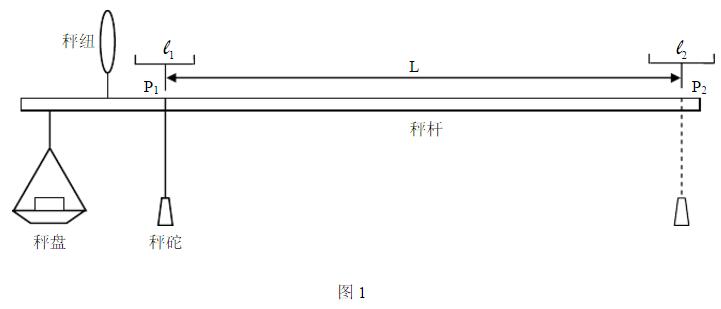Load CellThe impact of temperature characteristics:
As you all know,
Load CellIt is used in scales, and its performance directly affects the performance of the scale, especially the temperature characteristics.
The temperature characteristics of weighing sensors mainly have two aspects. One is the zero temperature coefficient of the weighing sensor, which is similar to the influence of temperature on the minimum static load output in the current national standard. The other is the sensitivity temperature coefficient of the weighing sensor, which is the influence of temperature on sensitivity as described in the current national standard.
To illustrate the importance of these two indicators (spec.), let's make an analogy.
Assuming there is a pole scale, as shown in Figure 1. Generally speaking, it consists of a weighing rod, a weighing pan, a weighing knob, and a weighing weight.
When there is no load placed in the weighing pan, due to the weight of the pan itself, the weighing weight needs to be placed on the P1 position, and the weighing rod can be balanced. We often place a mark on the position of P1, which is colloquially referred to as&quo; Dingpan Star&# quo;, It represents the zero point of the scale.
When the rated load is placed on the scale (i.e. the expected load to be weighed by the scale when making the scale), the weight should be placed at P2
The position of the scale can be balanced again, and we can also mark P2 to indicate the weight of the object in the scale. We refer to the length L between P1P2 as the range of the pole scale.
If we understand this pole scale as a weighing sensor, then the fixed disk star can be understood as the zero output of the weighing sensor, that is, the output when there is no load in the scale; If we want to understand the fixed disk star as the minimum static load output, then we should understand the weight of the scale as the minimum static load; Of course, we can understand the length of L as the rated output of the weighing sensor, which is the sensitivity.
We hope that this pole scale is accurate, so we need it to maintain the position of the fixed disk star and the length of the pole L under any environmental conditions. Unfortunately, in reality, these two factors change with the changing work environment. As shown in the figure, the position of P1 will vary within the range of l1, and the length of L will vary within the range of l2, and sometimes the range of variation is quite large. Some people may say that we have also seen and never heard of pole scales, and that the accuracy of pole scales is actually affected by changes in the fixed disk star and pole length, because the accuracy level of pole scales is very low. For example, a scale weighing 30 pounds has a mark on each pair, and it only has 300 divisions. Therefore, the impact of the changes in the positions of P1 and P2 cannot be seen. When the scale we want to make reaches 3000 divisions or even 5000 divisions, the changes in the positions of P1 and P2 will significantly affect the weighing results.
In a weighing sensor, the change in P1 is the zero output change. If it is caused by temperature, we use the zero temperature coefficient (or the effect of temperature on the minimum static load output) to describe it; The change in P2, or the change in L, is the change in sensor sensitivity. If it is caused by a temperature change, it is the sensitivity temperature coefficient, which is the effect of temperature on sensitivity.
Now, it's easy to imagine that when P1 changes and P2 also changes, will this scale still be accurate? Especially a high-precision scale. Because of this, when making weighing sensors, we need to perform strict zero temperature compensation, that is, keep P1 unchanged, or more precisely, limit its changes to a very small range; At the same time, we also need to implement strict sensitivity temperature compensation to ensure that the length L of the rod does not change (even if P1 remains unchanged, P2 also remains unchanged), or to control its variation within an acceptable range. If we cannot achieve this, then manufacturing weighing sensors for high-precision scales is just empty talk.

